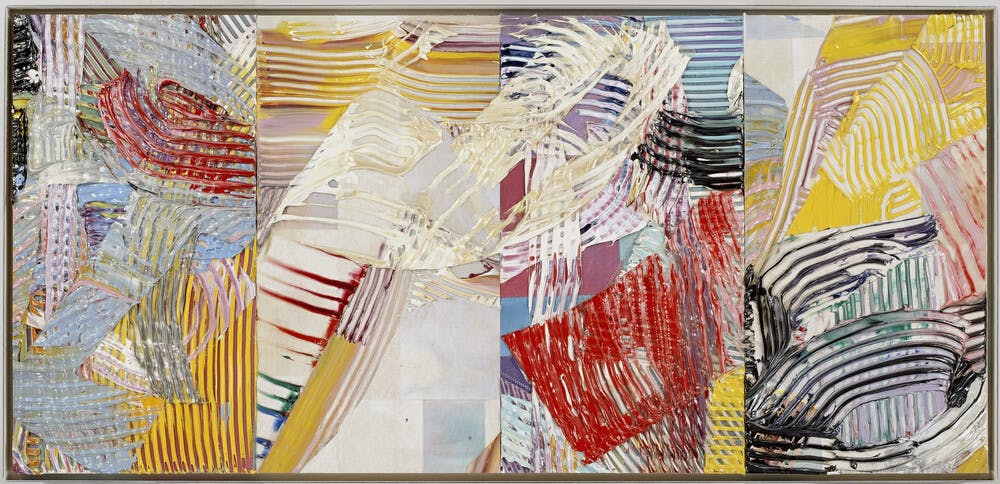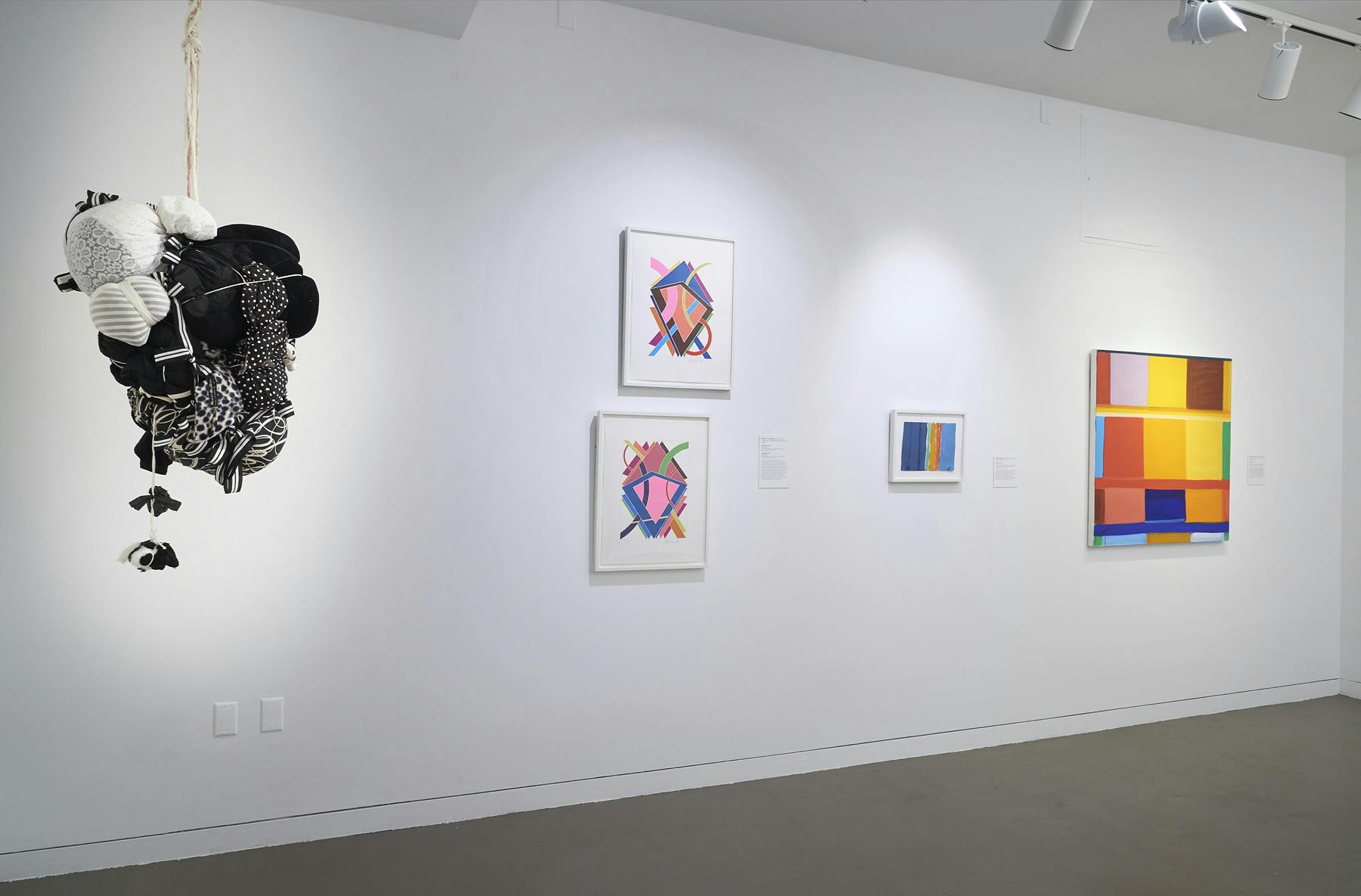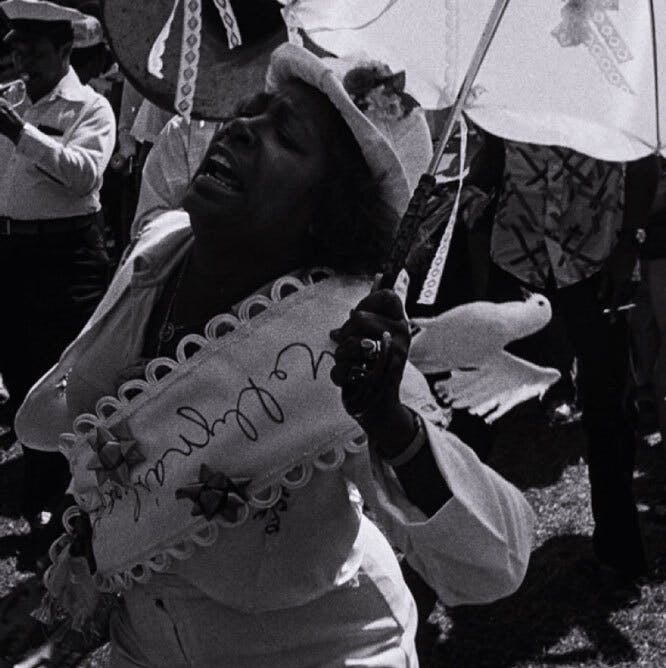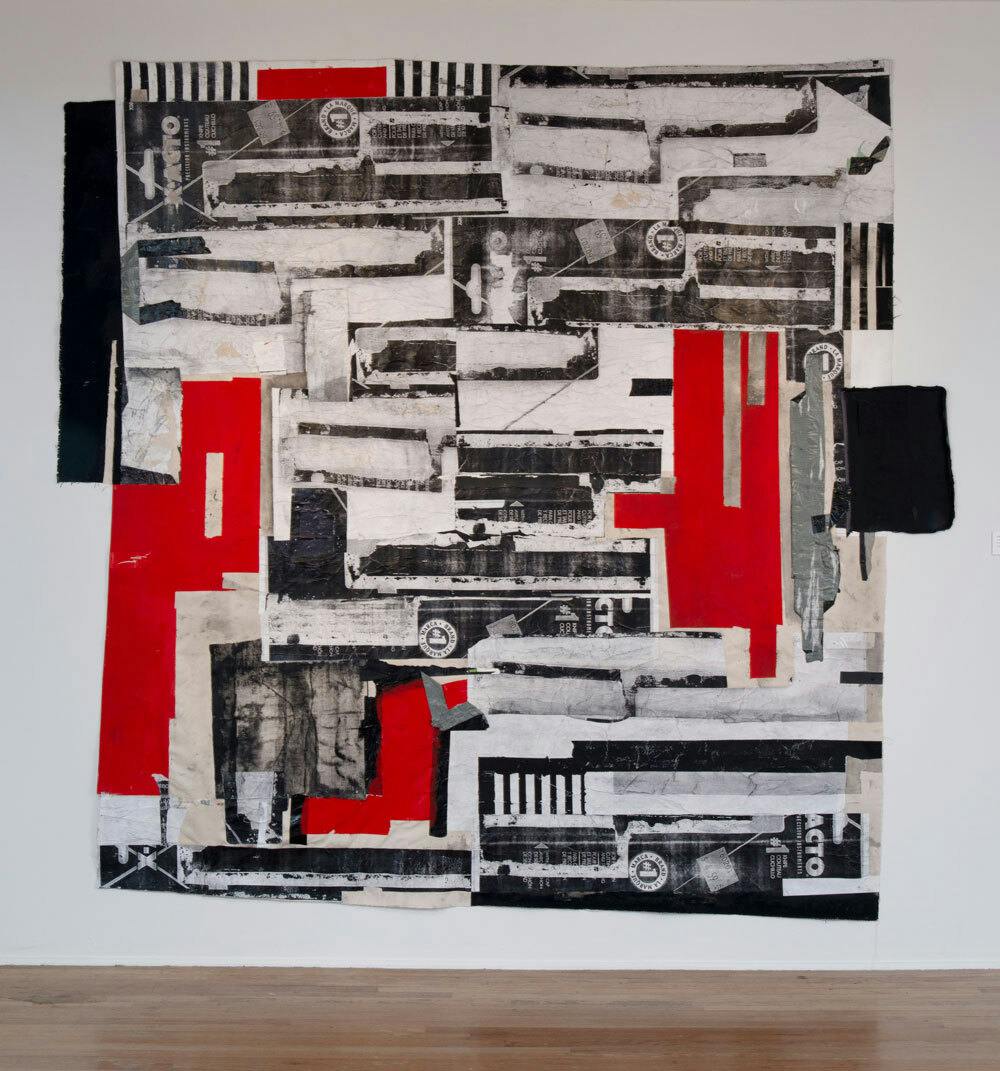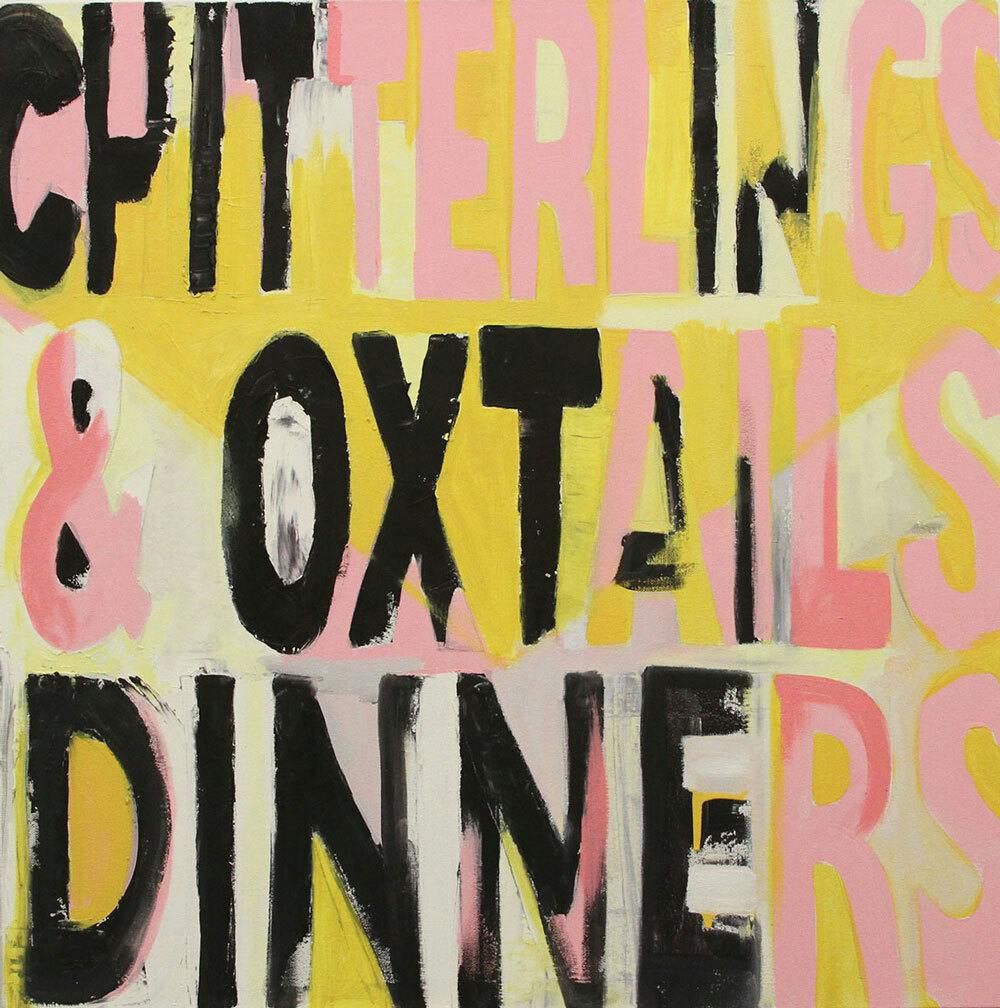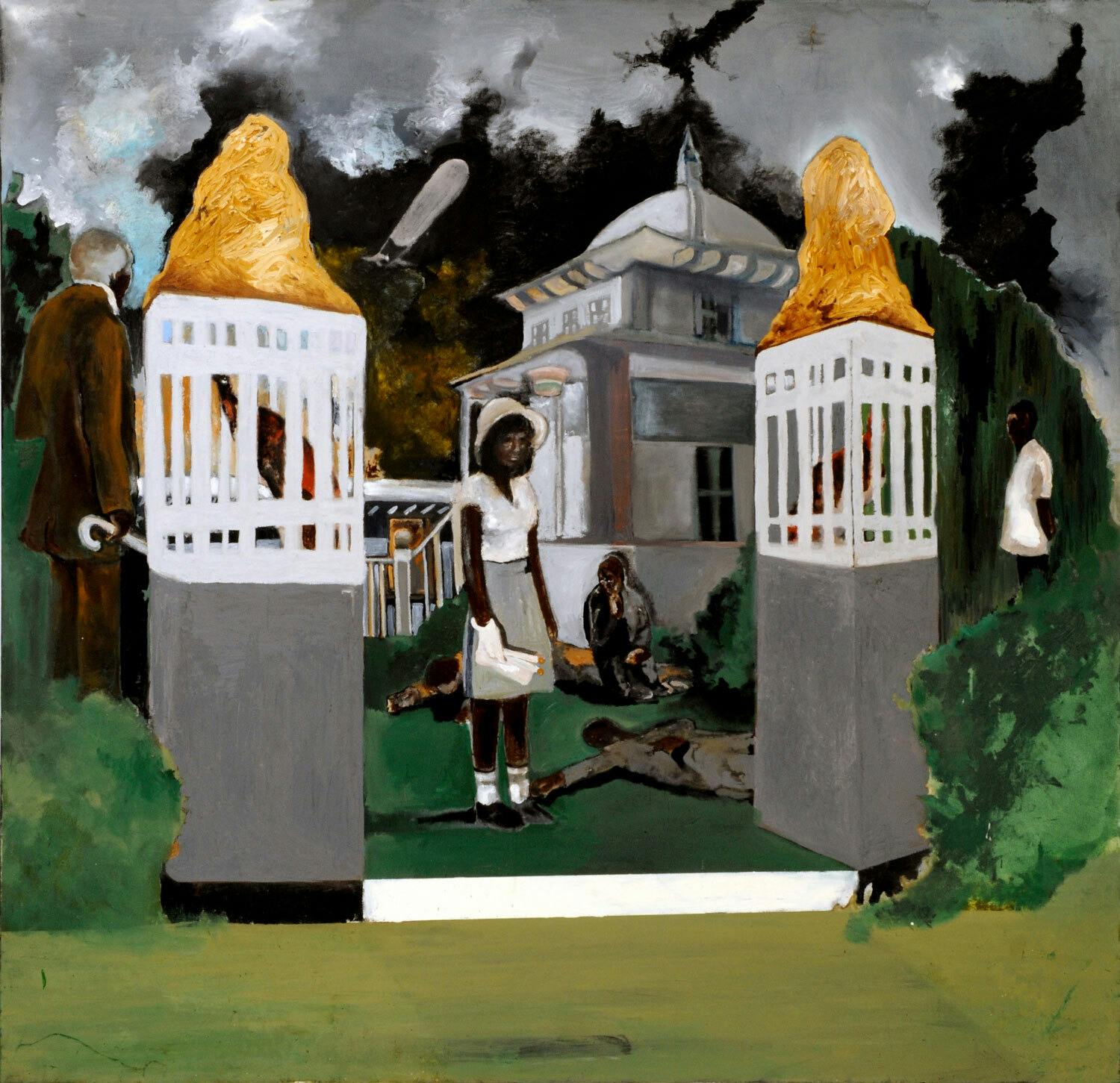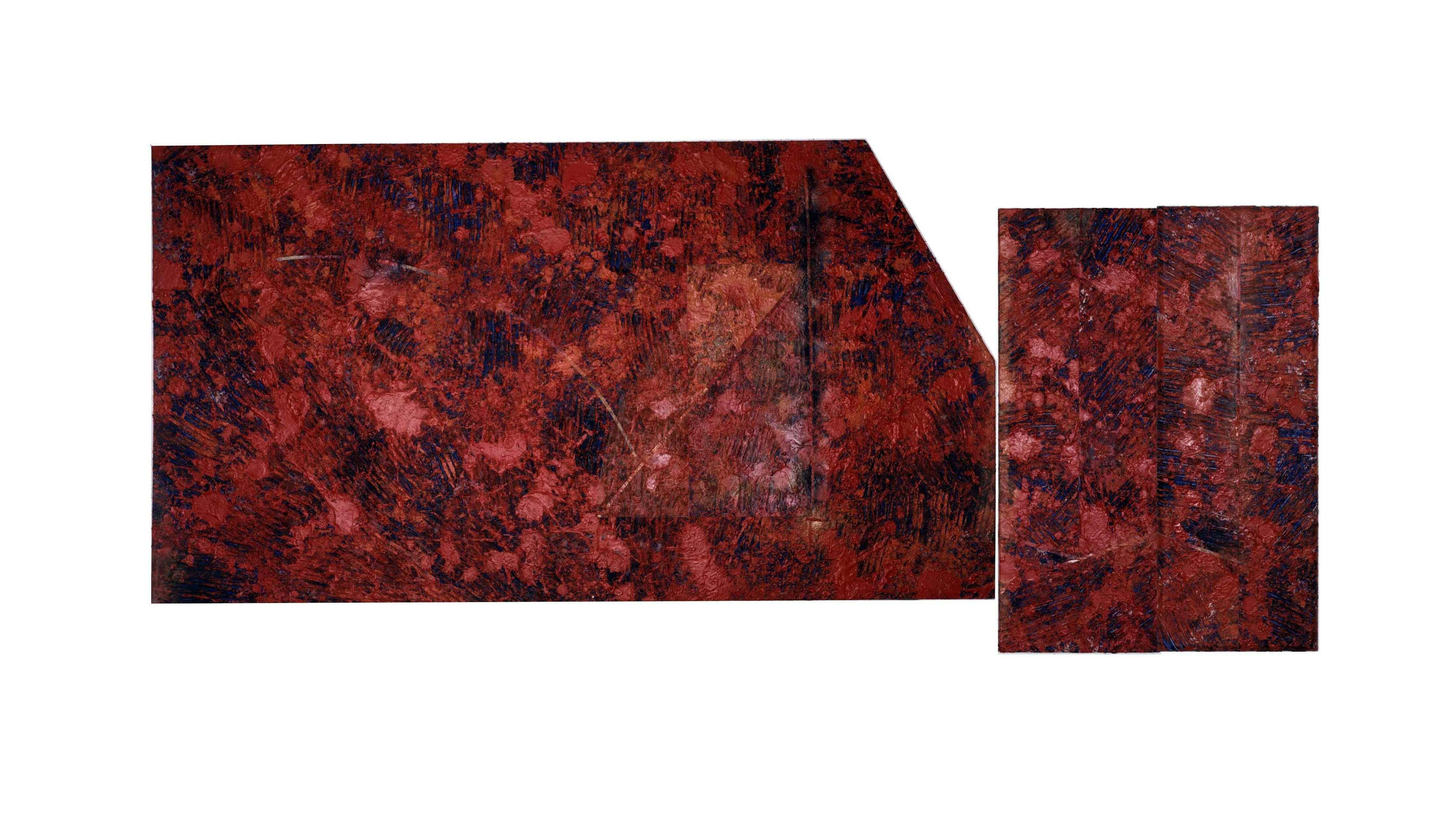Sam Gilliam
(1933–2022)An expert colorist, Sam Gilliam transformed the possibilities of painting by liberating canvases from their stretchers.
Biography
Blurring the boundaries between painting, sculpture, and installation, Sam Gilliam wrestles with the physicality of the art object and its relationship to the viewer.
Born in Tupelo, Mississippi, he was the seventh of eight children. From an early age, he demonstrated an interest in drawing. He sketched in the dirt until his mother provided him with paper and cardboard. Throughout middle and high school, teachers recognized and nurtured Gilliam’s talent. After receiving his BA at the University of Louisville, he served two years in the army, before returning to Louisville for his MFA. In 1962, he moved to Washington, DC, during the formation of Color Field painting, which emphasized the use of flat planes of color and novel paint application techniques. Profoundly influenced by his engagement with artists of this school, such as Thomas Downing, Gilliam soon experimented with color, form, and technique, pouring pigments and folding canvases while still wet. These explorations led him to remove his canvases from their stretchers entirely, and, inspired by laundry on clotheslines, hang them from the ceiling or walls. He never hung any in the same way, instead embracing the improvisational possibilities much like that of a jazz musician.
Gilliam transformed painting into something sculptural and three-dimensional, disrupting traditional modes of presentation and viewing. He also incorporated metal forms, alternative materials like yarn and glitter, varied applications of paint, and quilt-inspired patterning into his practice. In the 1960s and 1970s, his works did not fit neatly into any prominent categories of art at the time, such as Pop, minimalist, or Conceptual. He, like many Black abstractions, defied the expectation that his work should explicitly relate to the Black experience. He argued that “the expressive act of making a mark and hanging it in space is always political. My work is as political as it is formal.”1 Despite regular inclusion in exhibitions at galleries, and becoming the first Black artist to represent the United States at the 1972 Venice Biennale, Gilliam only received critical acclaim and recognition later in his career. He passed away in 2022.
Gilliam earned his BA and MFA from the University of Louisville. He received a Guggenheim Fellowship (1971); US State Department Medal of Arts (2015); and Archives of American Art Medal (2018). The Studio Museum has presented his work in numerous exhibitions including X to The Fourth Power (1969); Red and Black to "D": Paintings by Sam Gilliam (1982); and Sam Gilliam: Recent Monoprints (1995).
Exhibitions and Events
Sam Gilliam
(1933–2022)An expert colorist, Sam Gilliam transformed the possibilities of painting by liberating canvases from their stretchers.
Northwest Wind, 1992
Biography
Blurring the boundaries between painting, sculpture, and installation, Sam Gilliam wrestles with the physicality of the art object and its relationship to the viewer.
Born in Tupelo, Mississippi, he was the seventh of eight children. From an early age, he demonstrated an interest in drawing. He sketched in the dirt until his mother provided him with paper and cardboard. Throughout middle and high school, teachers recognized and nurtured Gilliam’s talent. After receiving his BA at the University of Louisville, he served two years in the army, before returning to Louisville for his MFA. In 1962, he moved to Washington, DC, during the formation of Color Field painting, which emphasized the use of flat planes of color and novel paint application techniques. Profoundly influenced by his engagement with artists of this school, such as Thomas Downing, Gilliam soon experimented with color, form, and technique, pouring pigments and folding canvases while still wet. These explorations led him to remove his canvases from their stretchers entirely, and, inspired by laundry on clotheslines, hang them from the ceiling or walls. He never hung any in the same way, instead embracing the improvisational possibilities much like that of a jazz musician.
Gilliam transformed painting into something sculptural and three-dimensional, disrupting traditional modes of presentation and viewing. He also incorporated metal forms, alternative materials like yarn and glitter, varied applications of paint, and quilt-inspired patterning into his practice. In the 1960s and 1970s, his works did not fit neatly into any prominent categories of art at the time, such as Pop, minimalist, or Conceptual. He, like many Black abstractions, defied the expectation that his work should explicitly relate to the Black experience. He argued that “the expressive act of making a mark and hanging it in space is always political. My work is as political as it is formal.”1 Despite regular inclusion in exhibitions at galleries, and becoming the first Black artist to represent the United States at the 1972 Venice Biennale, Gilliam only received critical acclaim and recognition later in his career. He passed away in 2022.
Gilliam earned his BA and MFA from the University of Louisville. He received a Guggenheim Fellowship (1971); US State Department Medal of Arts (2015); and Archives of American Art Medal (2018). The Studio Museum has presented his work in numerous exhibitions including X to The Fourth Power (1969); Red and Black to "D": Paintings by Sam Gilliam (1982); and Sam Gilliam: Recent Monoprints (1995).
